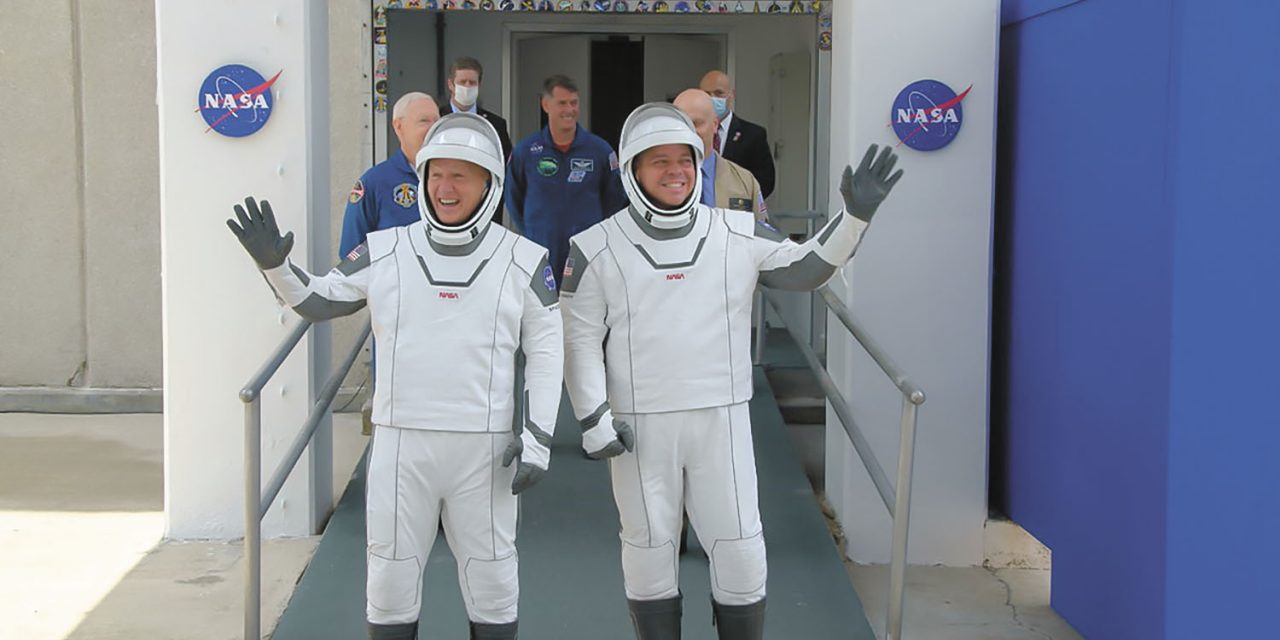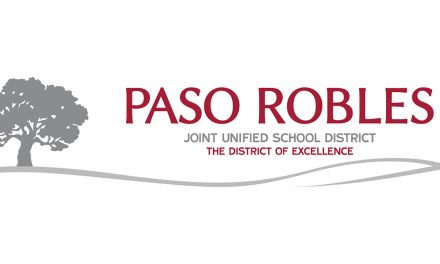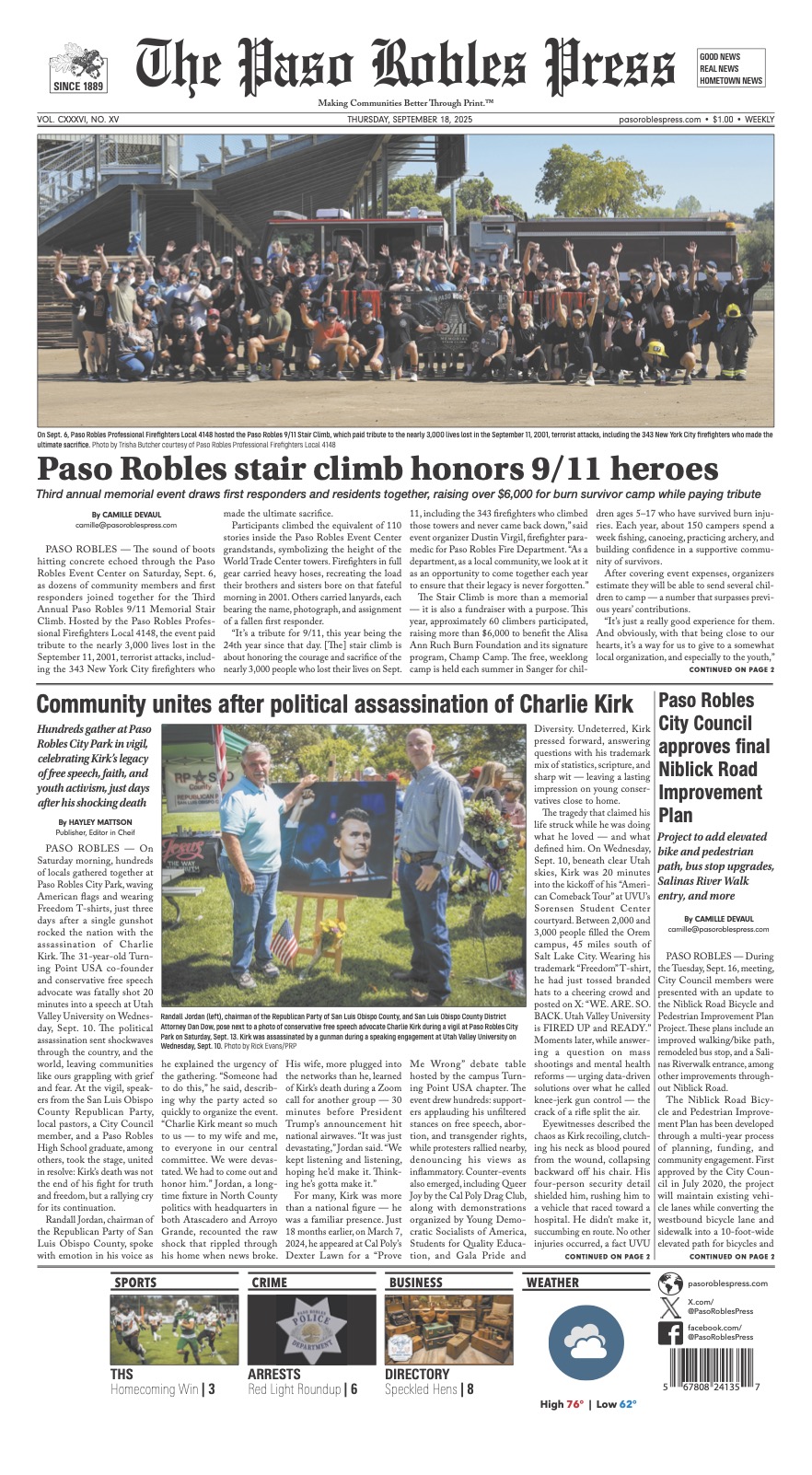NASA Astronauts launched from American soil in a privately owned and operated spacecraft.
At a time that seems very dark and uncertain, we were able to experience a historic moment of hope and amazement on Saturday, May 30, with the launch of NASA Astronauts into space aboard Space X Crew Dragon.
This is the first time in history that NASA Astronauts launched from American soil in a privately owned and operated spacecraft. The launch marks the first American spacecraft to carry astronauts into space since the space shuttle program was retired in 2011, almost a decade later.
Initially, the launch was scheduled on Wednesday and was scrubbed just 17 minutes before liftoff due to poor weather conditions, which included rain, lightning, and thunderstorms.
Aboard the Space X Crew Dragon were NASA astronauts Robert Behnken and Douglas Hurley. They lifted off at 12:22 p.m. PST Saturday on the company’s Falcon 9 rocket from Launch Complex 39A at NASA’s Kennedy Space Center in Florida.
The two veteran NASA astronauts, Bob Behnken and Doug Hurley, both have experienced flight on two space shuttle missions before the program’s retirement.
Both men are military test pilots, members of the same astronaut class, have one son, and each are married to other astronauts, Mr. Behnken to Megan McArthur and Mr. Hurley to Karen Nyberg.
“Today, a new era in human spaceflight begins as we once again launched American astronauts on American rockets from American soil on their way to the International Space Station, our national lab orbiting Earth,” said NASA Administrator Jim Bridenstine. “I thank and congratulate Bob Behnken, Doug Hurley, and the SpaceX and NASA teams for this significant achievement for the United States. The launch of this commercial space system designed for humans is a phenomenal demonstration of American excellence and is an important step on our path to expand human exploration to the Moon and Mars.”
According to NASA, Space X is very different than the previous shuttles. The original Space Shuttle relied on rocket boosters strapped to a giant winged spacecraft to ferry astronauts to and from the ISS (International Space Station). Crew Dragon, however, is a smaller capsule that launches on top of a rocket, bearing more resemblance to Russia’s Soyuz capsule or the Dragon spacecraft that SpaceX has used to shuttle cargo to the space station for years. Since then, America has had to rely on space travel with Russia, who has used its spaceflight monopoly to charge more and more per round-trip ticket for each NASA astronaut, according to NASA. According to national reports, the cost had risen from about $21 million in 2008 (before the shuttle was retired) to more than $90 million per seat on a planned flight for October.
“This is a dream come true for me and everyone at SpaceX,” said Elon Musk, chief engineer at SpaceX. “It is the culmination of an incredible amount of work by the SpaceX team, by NASA, and by a number of other partners in the process of making this happen. You can look at this as the results of a hundred thousand people roughly when you add up all the suppliers and everyone working incredibly hard to make this day happen.”
The SpaceX Crew Dragon spacecraft arrived safely at the ISS on Sunday, May 31. Welcoming Behnken and Hurley were NASA Space Explorer Chris Cassidy and Russian cosmonauts Anatoly Ivanishin and Ivan Vagner. Cassidy has been in orbit since April 9 and is currently serving as Commander aboard the ISS as part of the Expedition 63 mission.
NASA is providing ongoing live coverage of the Crew Dragon’s trip. According to reports, Behnken and Hurley will work with SpaceX mission control to verify that the spacecraft is performing as intended by testing the environmental control system, the displays, and the control system, and by maneuvering the thrusters other things.
The duration of the mission will be roughly 110 days; however, the exact date when the astronauts will return to earth has yet to be released.
“It’s difficult to put into words how proud I am of the people who got us here today,” said Kathy Lueders, NASA’s Commercial Crew Program manager. “When I think about all of the challenges overcome, from design and testing to paper reviews, to working from home during a pandemic and balancing family demands with this critical mission, I am simply amazed at what the NASA and SpaceX teams have accomplished together. This is just the beginning; I will be watching with great anticipation as Bob and Doug get ready to dock to the space station tomorrow, and through every phase of this historic mission.”
















